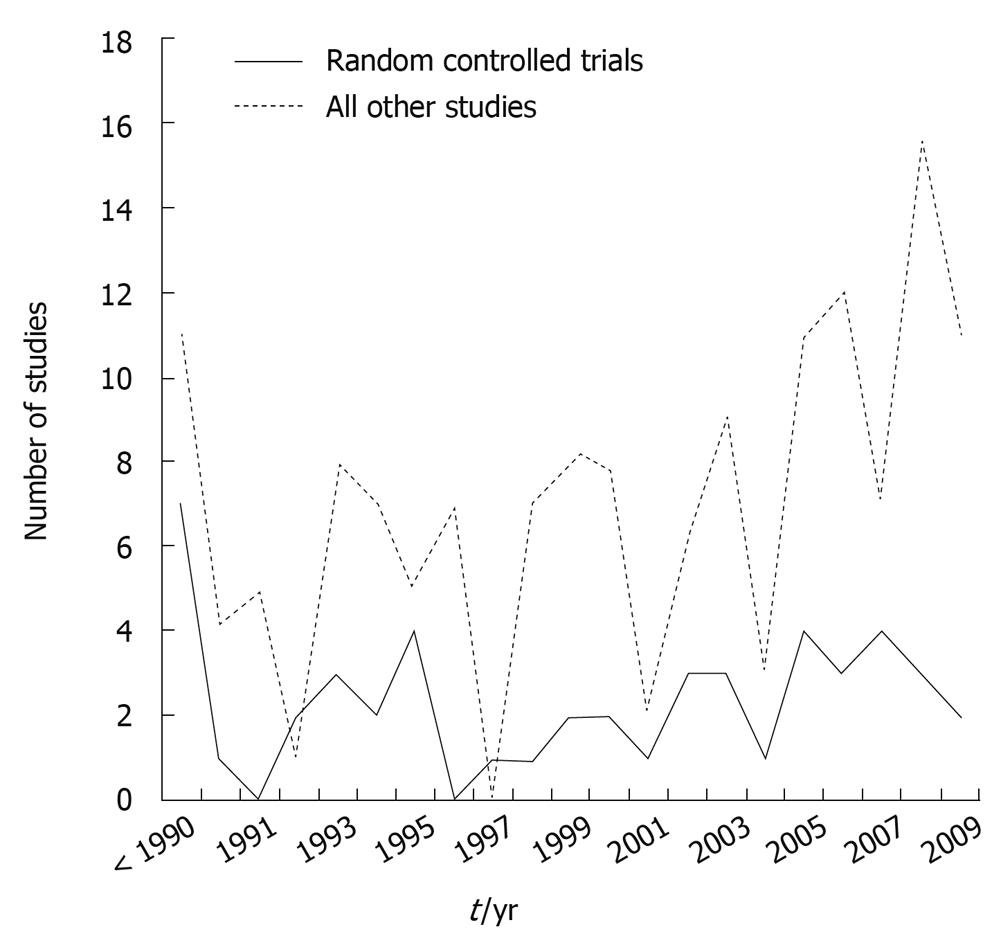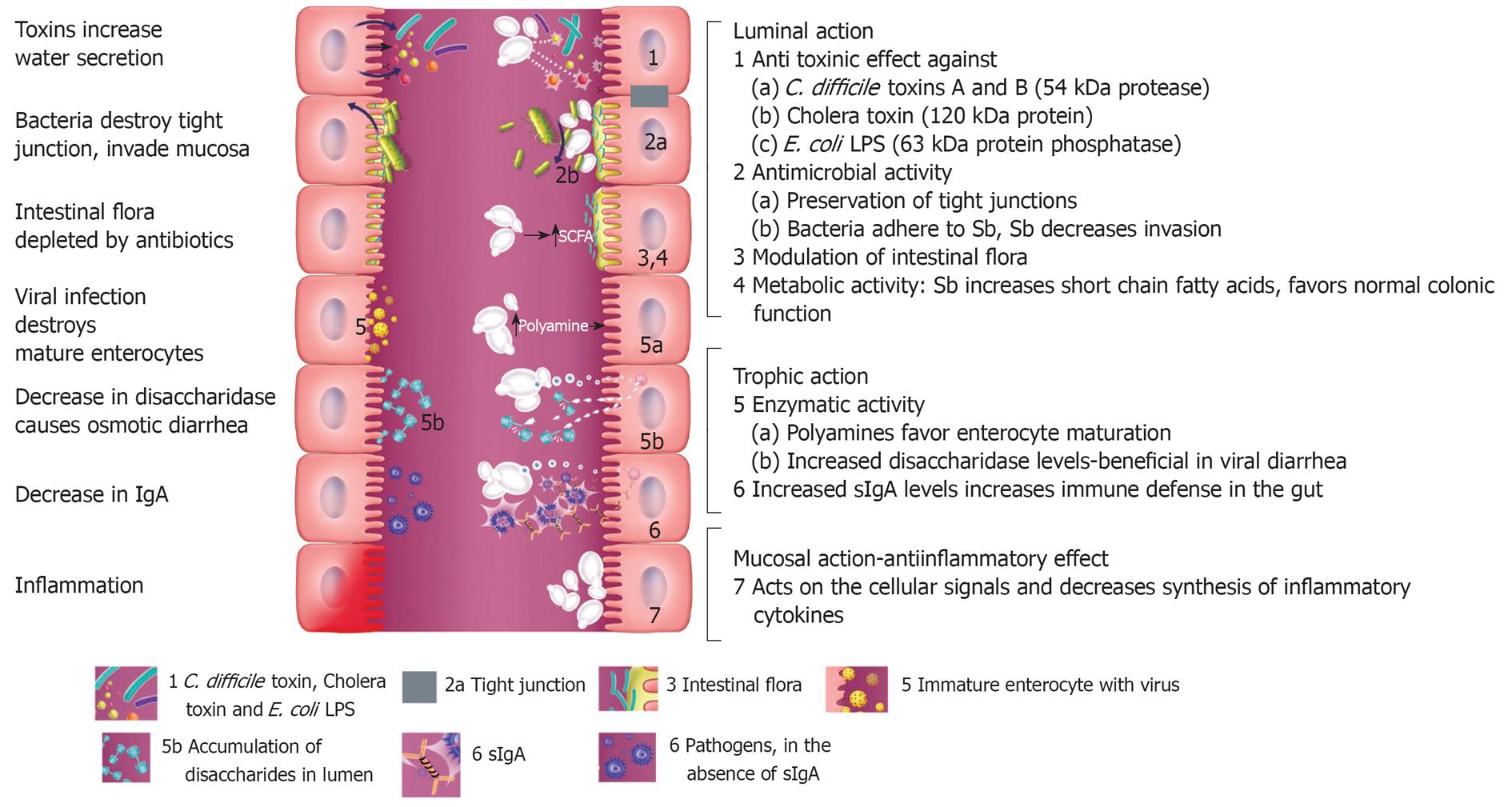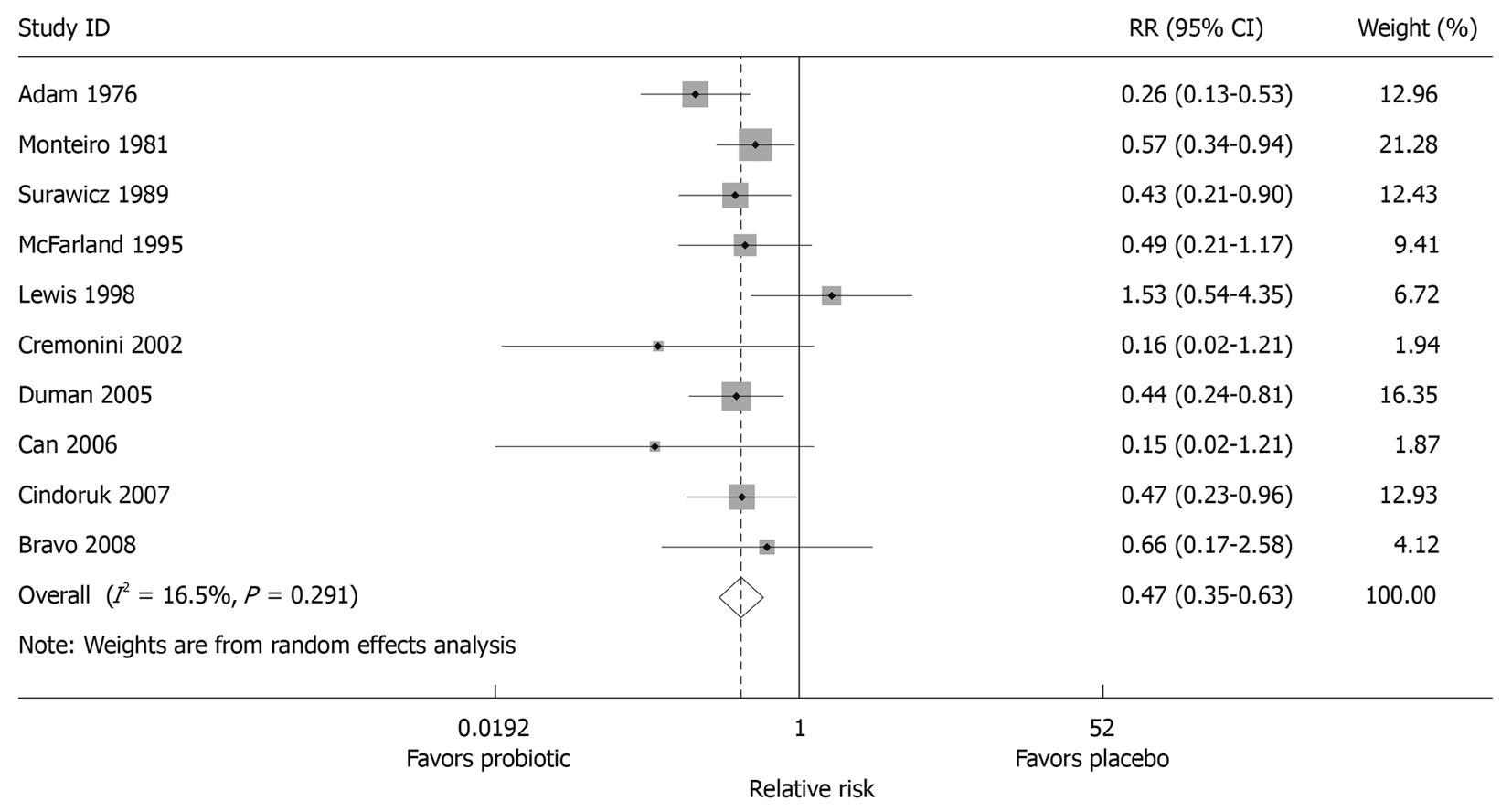Copyright
©2010 Baishideng.
World J Gastroenterol. May 14, 2010; 16(18): 2202-2222
Published online May 14, 2010. doi: 10.3748/wjg.v16.i18.2202
Published online May 14, 2010. doi: 10.3748/wjg.v16.i18.2202
Figure 1 Frequency of peer-reviewed publications on Saccharomyces boulardii from 1976 to 2009.
Figure 2 Schematic of intestinal tract, illustrating the different potential mechanisms of action of Saccharomyces boulardii (Sb).
On the left, effects of different pathogenic microbes are depicted. On the right, seven different protective effects of S. boulardii are depicted. Within the lumin of the intestine, S. boulardii may degrade toxins of pathogens, interfere with pathogenic adherence, modulate normal microbiota and preserve normal intestinal physiology. S. boulardii may also indirectly restore normal short chain fatty acid (SCFA) balance. S. boulardii may also increase secretory IgA (sIgA) levels or act as an immune regulator by influencing cytokine levels.
Figure 3 Forest plot of meta-analysis of ten randomized controlled trials measuring protective effect after treatment with S.
boulardii or placebo for the prevention of antibiotic-associated diarrhea in adult patients. The x-axis depicts effect size, with black dot denoting the relative risk and the line indicating 95% CI, with the size of the grey box proportional to the study size. Relative risks to the left of RR = 1 denote study favored the probiotic, RR to the right denotes the study favors the placebo. Overall, pooled RR was 0.47 (0.35-0.63).
-
Citation: McFarland LV. Systematic review and meta-analysis of
Saccharomyces boulardii in adult patients. World J Gastroenterol 2010; 16(18): 2202-2222 - URL: https://www.wjgnet.com/1007-9327/full/v16/i18/2202.htm
- DOI: https://dx.doi.org/10.3748/wjg.v16.i18.2202











